The Great Experiment
Is stratospheric aerosol injection inevitable now?

“Desperate times breed desperate measures.”
~ William Shakespeare
Democracy has been referred to as the Great Experiment. As it teeters from the threat of Trump and “righteous” Christian Fascism, we must not forget that climate change is also an experiment that can topple democracy. Frighteningly, the two could easily work hand in hand as the realities of global warming create ever-increasing disasters from droughts and floods, force migration, create shortages, and drive systemic inflation. These conditions unchecked can lead to social unrest, military law, resource wars and dictatorship.
The Paris Agreement under heat
In 2015, the United Nations Climate Change Conference, COP 21 was held in Paris. Because of indisputable evidence of global warming from ice core sampling, ocean probes and satellite data, 196 nations signed a legally binding international treaty on climate change. That treaty went into effect in 2016 with the agreement to limit global warming to 1.5°C. To achieve that goal, greenhouse gas emissions must decline 43 percent by 2030.
We are well on the way to blowing past that goal. March was the tenth month in a row of record-breaking heat, both air and sea surface temperature. It was 1.68°C warmer than the pre-industrial March average for 1850-1900.

The target of 1.5°C of warming above pre-industrial society levels is not arbitrary. That figure is the maximum temperature rise we can sustain without greatly worsening the catastrophic effects we’re already experiencing as we exceed that level for the first time. Further rise will destroy agriculture, already under duress, create at minimum hundreds of millions of climate refugees by 2050, possibly over a billion, fuel runaway inflation, and give rise to resource wars for food and water. Although the effects will be unequal, no nation will be spared and superpower nuclear tensions will be heightened. We are already monkeys forever at war, without the need of complete environmental collapse to create more reasons to slaughter one and the other. Over 34,000 dead Palestinians would like to attest to that.
Already we have witnessed fires at previously unimaginable scales, in Australia, 46 million acres burned in 2020 and in Canada, where a near identical 46 million acres burned last year. Coastal sea rise from the Arctic warming four times faster than the rest of the planet along with the Greenland ice sheet have combined to lose around eight trillion tons of ice since 1992 (scientific paper here, scroll to conclusions) and are already submerging inhabitable islands and densely populated coastlines such as US east coast (interactive link here), exacerbated by sinking from over pumping groundwater. As the ice recedes, its heat reducing reflectivity is replaced by dark heat absorbing ocean water, hastening the melt and adding moisture into the atmosphere that fuel heavier, slower moving, more destructive hurricanes.
This is the path to a Blue Ocean Event, when the Arctic becomes ice free in the summer, possibly as early as the 2030s. The melting of the glaciers and influx of warm water in turn is measurably slowing the Atlantic Meridional Overturning Circulation (AMOC) whose convection cools water from north of the equator and warms water south of it. Ironically, if this current stalls it would abruptly drop temperatures by several degrees in the global north and cause a different set of severe, cascading consequences for the world.
Agriculture under pressure
Crop declines and failures are increasing from historic droughts and floods. India, for instance, the largest producer of rice in the world at 21,500 metric tons a year, is also one of the countries under the greatest duress from climate change. Rice is a staple for more than half the world, but yields are falling. The monsoon has become erratic, bringing extreme rainfall at times and sudden drought at others. Rice is an incredibly water-intensive crop, dependent on flooded fields, but drought-prone area in India has increased by 57 percent since 1997. Yet instances of heavy rainfall have risen by almost 85 percent since 2012, a different form of devastation. Weather unpredictability is becoming an enormous problem for farmers globally, affecting planting, the length of the growing season, crop tolerance to changing conditions and decreased nutritional value from stress. In addition, much of the world’s is soil becoming infertile from decades of poor management.
Heat fueled drought and fire are becoming too extreme, frequent and extended. Consider olive oil from the Mediterranean. In Spain, spring 2023 freshwater reservoirs were only 25 percent full, forcing the government to ration water to olive farmers at just a quarter of the normal amount. 4,500 hectares of olive groves burned to the ground. In Tuscany, thousands of olive trees were destroyed by fire and one-fifth of Italy is at risk of desertification.
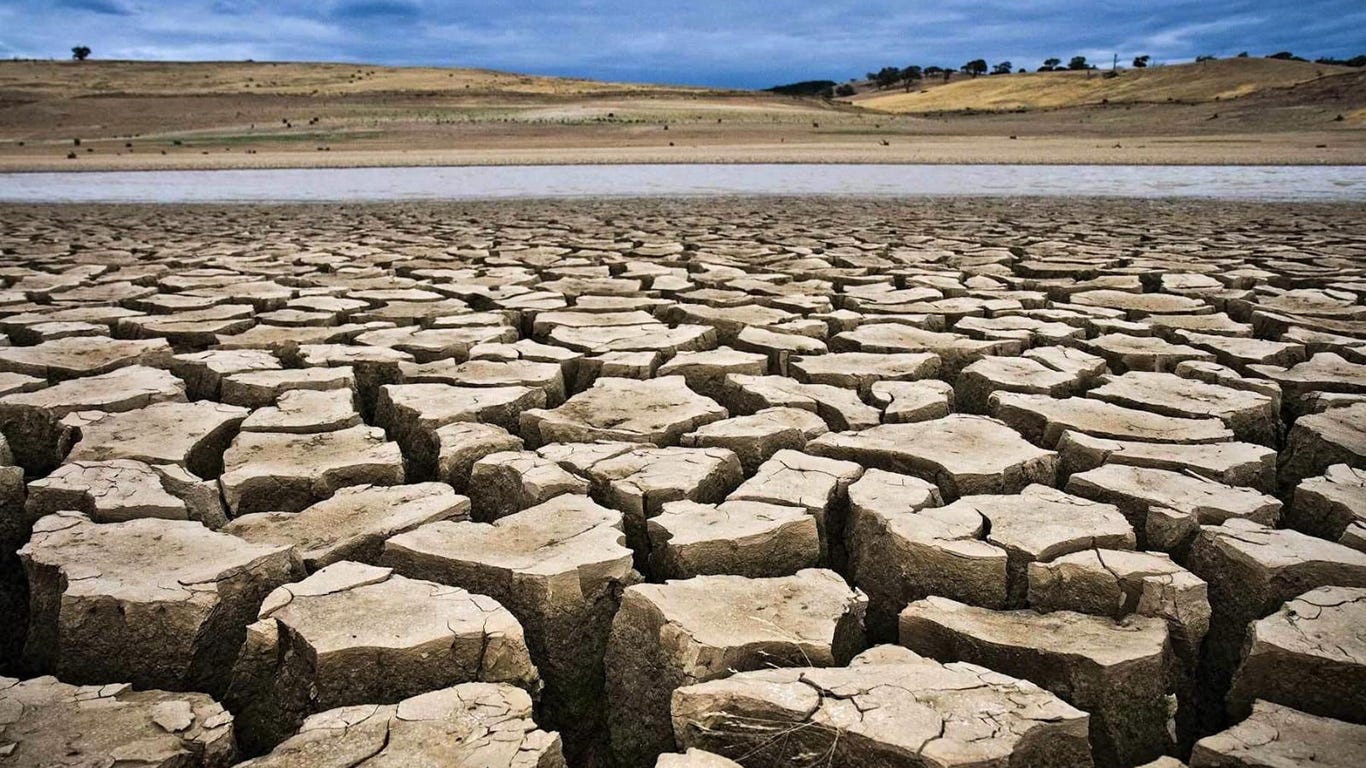
Agriculture is stressed across Southern Europe. Moisture depleted soil is causing staples like wheat and barley crops to fail, which feed the animals we eat as well. In a bit of good news, California, so essential to the American and world agriculture and 5th biggest economy on the planet has been given a reprieve by two winters in a row of normal precipitation, staving off decades long historic drought and over pumped groundwater. The rain and snow though were far from normal though, dropping months worth of moisture in a matter of days. Los Angeles recorded its third-wettest two-day stretch since record keeping began in the 1870s, with six to twelve inches in the area. 475 mudslides occurred.
More distressingly in Southern Africa, unjust victims of the western world’s profligate burning of fossil fuels has put 20 million people into acute hunger in the countries of Zambia, Malawi, Mozambique, and Zimbabwe where national emergencies have been declared. We speak of starvation in Palestine as we should, but this far more massive tragedy goes largely unspoken of in western media. Global warming heat there has caused El Niño to be more deadly.
Our three critical carbon sinks are being compromised
There are three carbon sinks on our planet that keep it inhabitable, the oceans, the forests, and the soil. Any single one of them represents tipping points for life as we know it on the planet. If one tips, the others are likely to follow, destroying civilization and leading to mass extinction, which will include us.
The ocean
If the ocean wasn’t a carbon sink, we would already be dead.
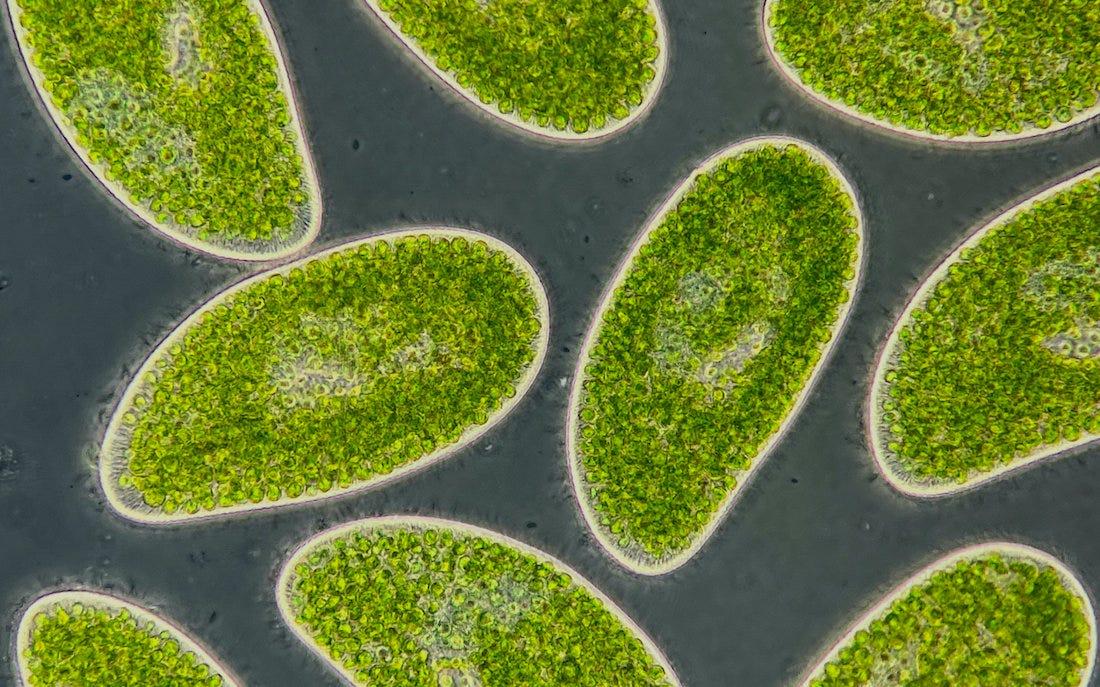
A 27-year study from 1992 to 2018 showed oceans took up 67 billion tons of CO2. However, this CO2 absorption is acidifying the oceans and causing yet another massive worldwide coral bleaching event by killing the symbiotic algae they need to survive. Coral reefs nurture 25 percent of ocean species at some point during their life cycles, provide barriers to coastal storms, and support fish that provide food and livelihoods to millions of people.
From the 2022 UN Ocean Conference:
The ocean covers 70 percent of the Earth’s surface, is the planet's largest biosphere, and is home to up to 80 percent of all life in the world. It generates 50 percent of the oxygen we need, absorbs 25 percent of all carbon dioxide emissions and captures 90 percent of the additional heat generated from those emissions. It is not just ‘the lungs of the planet’ but also its largest carbon sink — a vital buffer against the impacts of climate change.
If the oceans become too saturated with CO2 to absorb carbon, a catastrophic tipping point will have been crossed.
The rainforests
Forests absorb twice as much carbon as they emit each year. On average, the Earth’s forests absorb 16 billion metric tons of CO2 annually, as reported in the scientific publication Nature Climate Change.
The world’s three largest tropical rainforests are located in the Amazon, Congo River basin and Southeast Asia. Only the Congo has enough forest left to remain a strong net carbon sink.
Carbon Fluxes from the World’s Three Major Rainforests
Forests across Southeast Asia have collectively become a net source of CO2 over the past 20 years from clearing for plantations, uncontrolled fires and drainage of peat soils. The Amazon rainforest is close or may have tipped to being an emitter now, largely driven by leveling the canopy to grow soy for animal feed and grazing cattle, and also suffers from uncontrolled fires.
Do we really want to continue eating burgers from Brazil? Most beef McDonalds buys is raised in Brazil, which is also true of other large fast food franchises. I wrote about this in Cheeseburger Freedom in 2021. At that time:
“China is the largest importer of beef in the world, at over 6 billion pounds in 2020. The United States is second at close to 3.5 billion pounds. Japan, South Korea and Hong Kong rank next with over 4 billion pounds combined. McDonalds which sold 15 million burgers in all of 1953 sells that many now in one day. It sold its one-millionth burger in 1958 and one-billionth in 1963. In 1993 at 99 billion served, the company stopped updating its signs to simply read, “Billions and Billions.”
“Most of the beef McDonalds buys is raised in Brazil, which is also true of other large fast food franchises. To raise cattle in Brazil requires grazing land, which means slashing and burning sections of the rain forest to the ground. Brazil’s forests are also cleared to raise soya which is used to feed the cattle and chickens. Why do I mention chickens? Because KFC, then McDonalds are the largest buyers of chicken in the United States.”
The boreal forests
Last June I wrote an article about Canada on fire in my home office in Buffalo, There’s Something in the Air. I could smell the burning for weeks, living just across the border, but of course much of America could. The fires released two billion metric tons of carbon, turning the forests into a massive carbon emitter of rather than a sink. By comparison, Canada’s entire economy for 2021 released just 670 million metric tons.
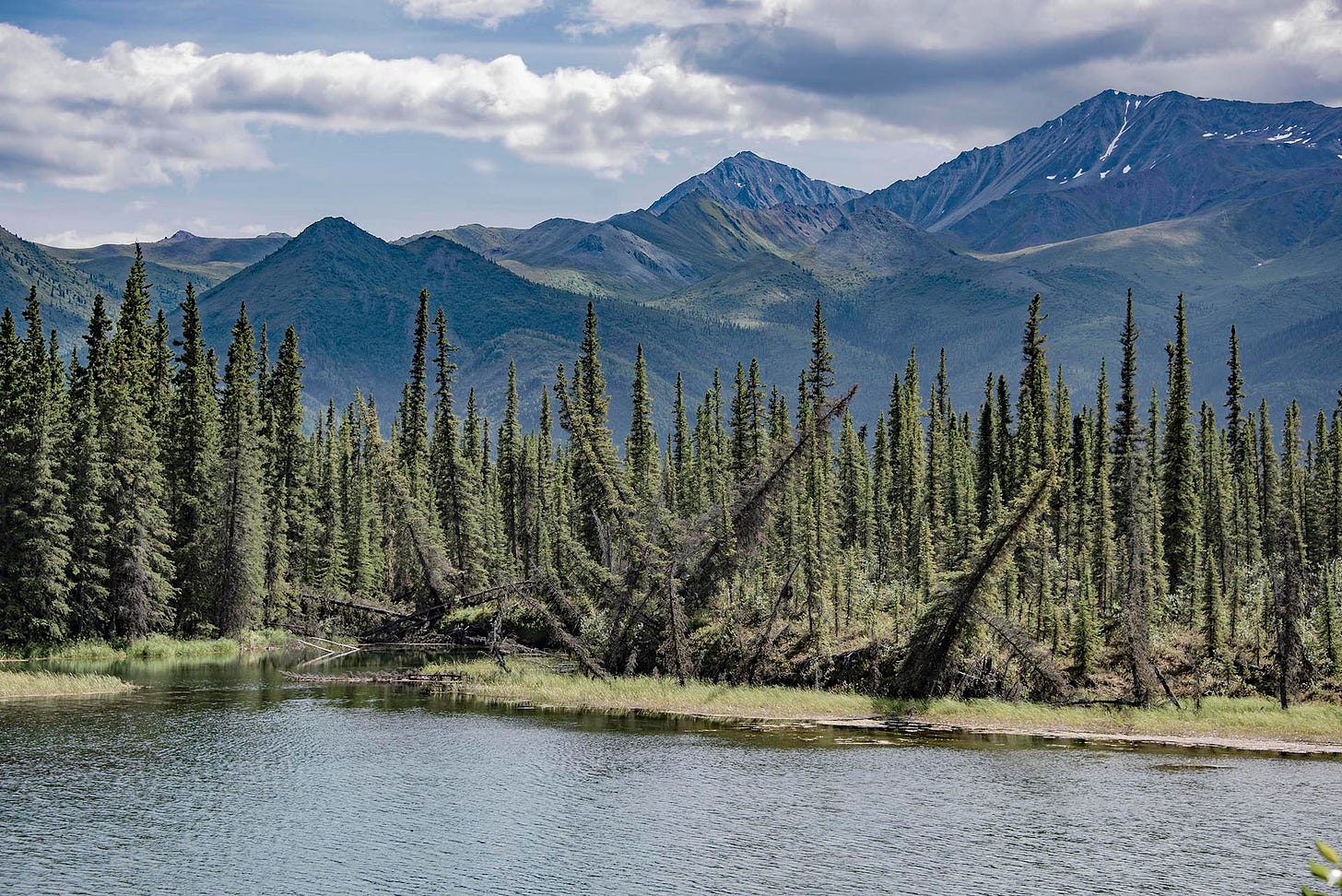
The North American boreal forests form part of a ring around the Arctic circle that include Alaska, Canada and Newfoundland. Russia is part of that ring as well. With 1.5 billion unmolested acres, it’s the largest intact forest left on Earth. It is doubly important as a CO2 absorber as well as a huge land mass that sequesters billions of tons of millions of years of carbon matter from previous epochs in its permafrost. With global temperatures rising, that is in danger of melting and releasing carbon that would be a tipping point of no return.
The soil
Soil is made in part of broken-down plant matter. Those plants absorbed carbon from the atmosphere while they were alive. Broken down by microbes over time, CO2 is released by this decaying matter to the atmosphere as part of the natural, balanced carbon cycle. Colder climates sequester it for longer, which is why areas with permafrost contain massive amounts of carbon going back millions of years that include not just dead plant matter, but the carbon of dead animals as well.
The length of time carbon stays in the soil before returning to the atmosphere varies significantly based on climate, soil composition, and use. Farming, for instance, changes the soil structure. By converting forests to farmland or grasslands, the release of the stored carbon back into the atmosphere is speeded up.
Globally, soils hold three times more carbon than the atmosphere. Along with the oceans and forests, there is no question that soil is one of the three critical natural systems we must take care of.
From the Center for Strategic and International Studies:
It is estimated that the past 12,000 years (and especially the past 200 years) of agriculture have released 133 billion metric tons of CO2 (GtCO2) from the soil into the atmosphere. That is more than three times as much carbon as all human activities emitted in 2019 (43.1 GtCO2). In some places, cultivated soils have lost up to 70 percent of their original organic carbon. Advocates of soil carbon sequestration, sometimes called “carbon farming,” say that changing the way we farm can restore at least some of that carbon to the soil.
From American University, Washington, D.C.
Soil carbon sequestration, also known as “carbon farming” or “regenerative agriculture,” includes various ways of managing land, especially farmland, so that soils absorb and hold more carbon. Increasing soil carbon is accomplished in various ways, including: (1) reducing soil disturbance by switching to low-till or no-till practices or planting perennial crops; (2) changing planting schedules or rotations, such as by planting cover crops or double crops instead of leaving fields fallow; (3) managed grazing of livestock; and (4) applying compost or crop residues to fields. In addition to providing local environmental and economic benefits, these practices can capture carbon dioxide (CO2) from the atmosphere and store it in soils, making them a form of carbon removal.
Solar radiation management: a sign of desperation
This NY Times article describes the experiment conducted on the Hornet. I went into great detail about the case for and against this technology in Stratospheric Aerosol Injection: Earth’s Last Chance Dance? I recommend it for a better understanding of this geoengineering than I can reasonably go into here. Frighteningly, we may be at the point of no choice but to conduct this planetary scale experiment to save ourselves from impending environmental, agricultural, economic and societal collapse.
I fear the unknowns. Based on our greedy, deluded behavior, successfully dropping the global temperature of the Earth could encourage continued burning of oil because its most immediate effects have been masked. If we become dependent on SRM, we become vulnerable to sudden and catastrophic failure should it cease. At best, this technology should be looked at as a desperation, time buying maneuver. The real solution is to restore the natural workings of this planet.

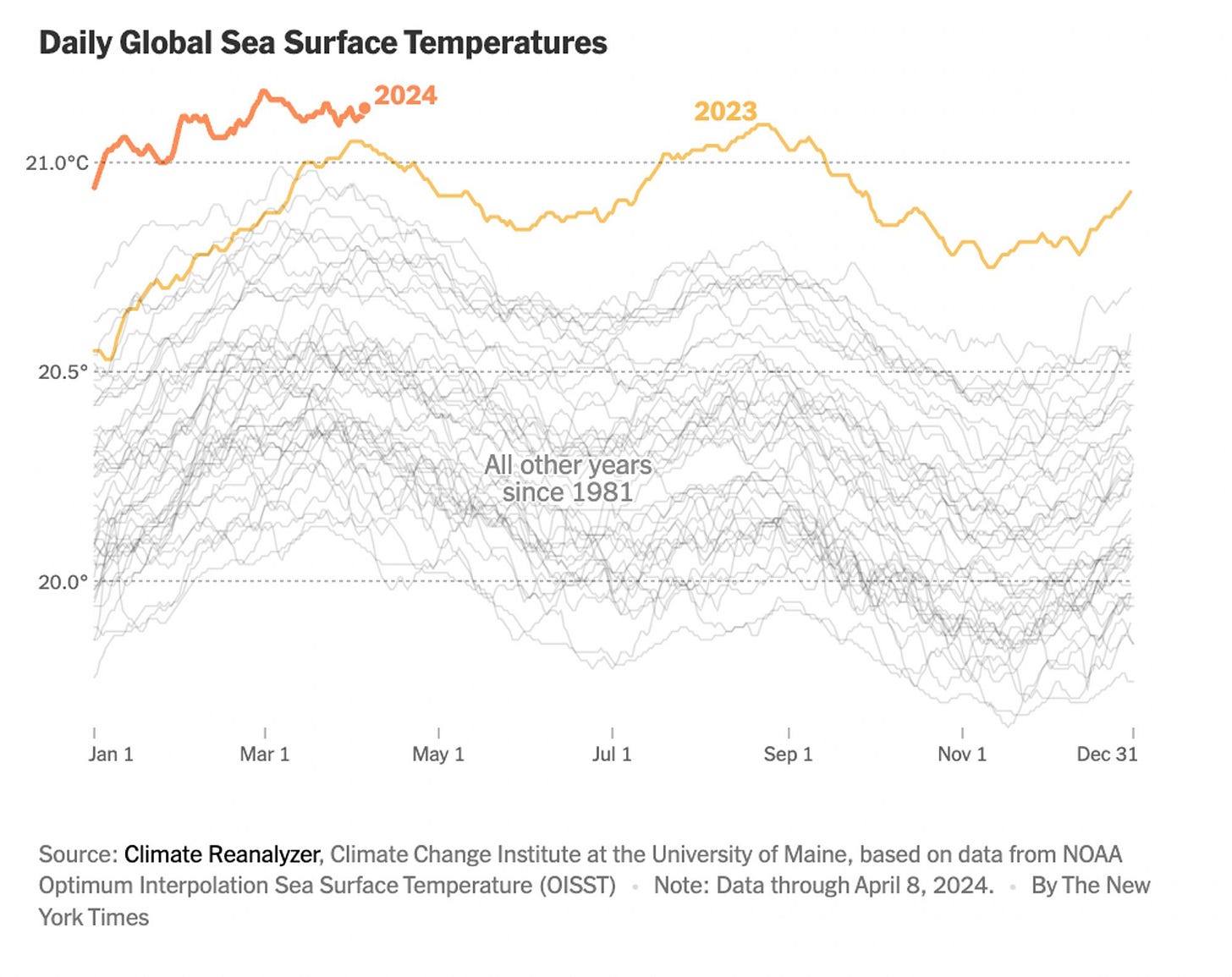

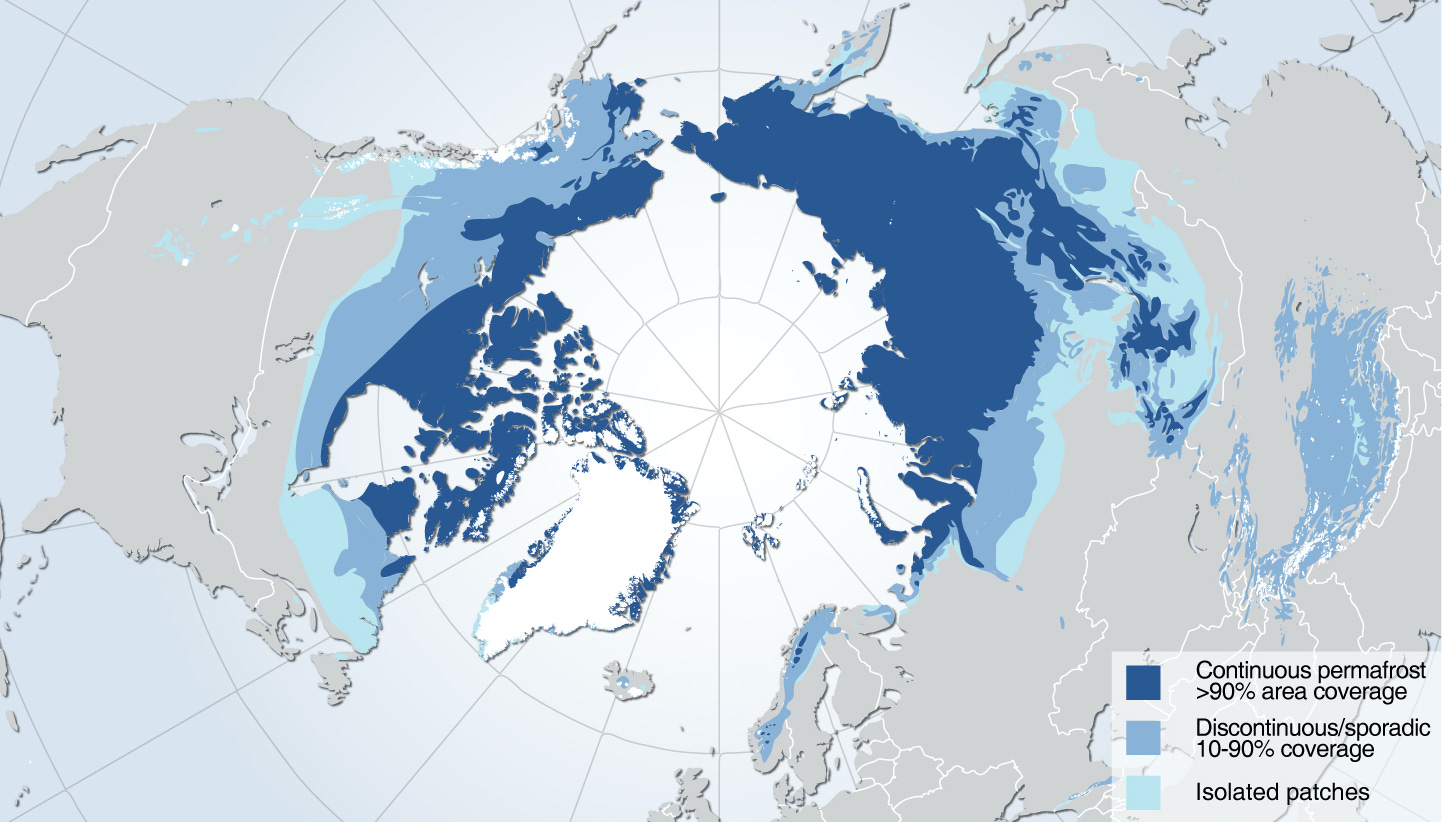
Thank you for this Geoffrey. This is very thorough and informative. I will share and encourage others to do the same.
While hard news to read, you capture the state of the world we painful clarity. I am unsure if it's because I am now tuned to only reading climate collapse aware writers, or if the world has genuinely accepted climate chaos is happening, even though it hasn't embraced doing anything about that reality, but at least while reading I don't feel so alone.
While I was writing FIRE, I felt like these messages were being spoken into the wind. Everyone was still generalising climate breakdown into the future, while I was feeling it in the present. Not any more. We are standing on the cliff edge, hearts racing and about to fall.